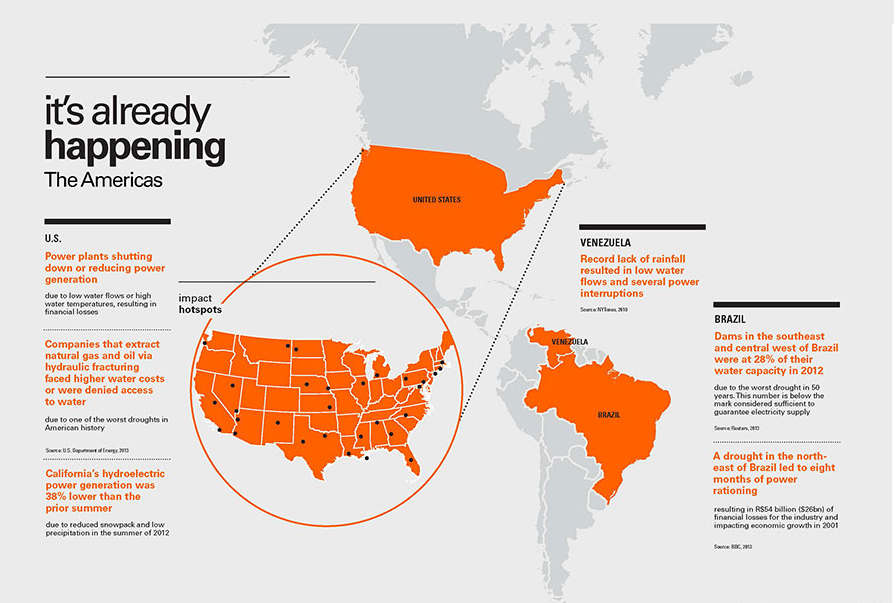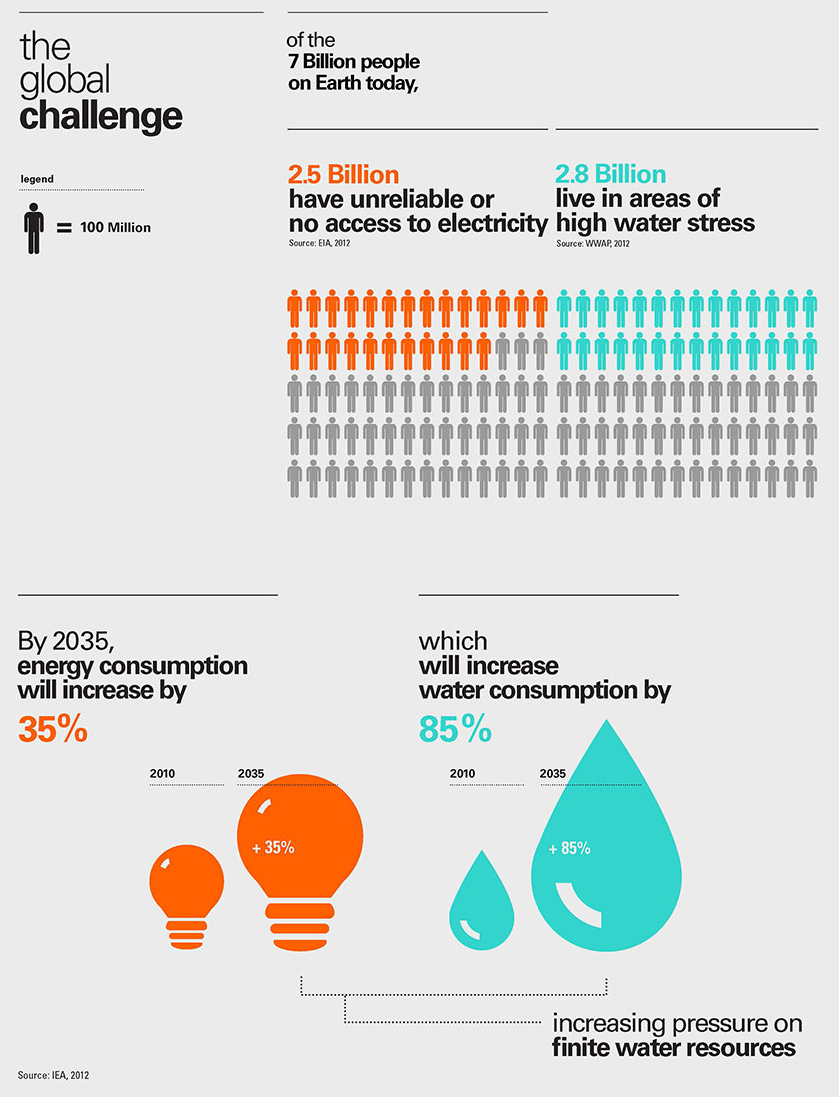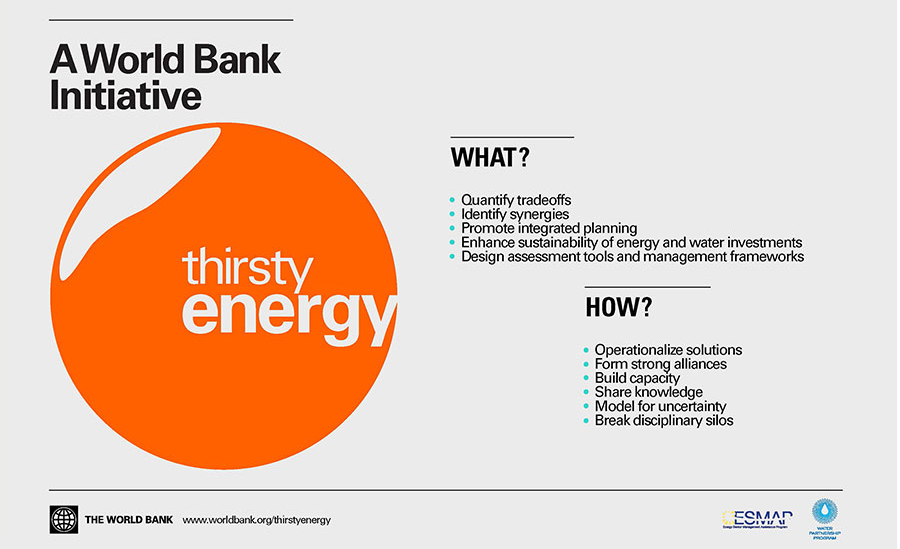 Energy and water, two of our most important global resources, are inextricably linked. And yet when it comes to planning, the regulatory agencies in charge of managing these precious resources are often separate and uncoordinated in their decision-making. With the World Bank’s recent unveiling of its Thirsty Energy initiative, it seems that the energy-water nexus is finally being taken seriously- and on a global scale.
Energy and water, two of our most important global resources, are inextricably linked. And yet when it comes to planning, the regulatory agencies in charge of managing these precious resources are often separate and uncoordinated in their decision-making. With the World Bank’s recent unveiling of its Thirsty Energy initiative, it seems that the energy-water nexus is finally being taken seriously- and on a global scale.
This new initiative aims to address the interconnection between energy and water head-on by providing countries with “assessment tools and management frameworks” to help governments “coordinate decision-making” when planning for future energy and water infrastructure. Fortunately, this kind of guidance couldn’t come soon enough. Here’s a cool infographic from the Thirsty Energy website to illustrate where we are and where we’re headed:
To further complicate things, climate change is expected to make the management of water and energy resources exceptionally challenging “by causing more water variability and intensified weather events, such as severe floods and droughts,” says the website.
Another key point from this initiative is that while a global water crisis is looming, many countries are already facing challenges to their electricity supplies.

As I mentioned in a previous blog, several areas in the US that are not considered water-stressed have already been experiencing rolling black-outs and brown-outs due to historic droughts.
More intense and longer droughts are also threatening areas such as India, China, and Brazil. In addition to being home to some of the world’s largest populations, these countries also represent an important hub of goods and services that the U.S. relies on. Furthermore, Americans have gotten used to having an abundance and diversity of food throughout the year from countries like India, China, and Brazil. As climate change continues to impact water and electric supplies in countries around the world, the agricultural sectors in many countries will be one of the hardest hit sectors, and that has direct implications for the American way of life.
The Thirsty Energy initiative of the World Bank aims to help countries begin the process of co-managing their electric and water planning. This is the basic first step that is needed. By corralling experts from its own water and energy programs within the World Bank, as well as those in the public and private sectors, the Thirsty Energy initiative will help countries work through their divisions, and prevent a constrained future.
The initiative is based on a working paper that the World Bank published in the summer of 2013. The report offered several recommendations to address the energy-water nexus, including improved modeling in both the water and energy sectors, more integrative planning, regulatory reform, and greater public and stakeholder involvement in developing solutions.
In its history, the World Bank has been responsible for some impressive financial and regulatory culture shifts. Hopefully, this initiative will be one of the efforts that brings about real change in the way countries around the world address the energy-water (and food) nexus. The World Bank is headquartered in Washington, D.C. and its President is an American. Hopefully the Bank’s effort to help countries around the world effectively address this nexus will spill over into its own neighborhood. It’s time for the U.S. and its states to take up this mantle.












2 Comments
Agriculture accounts for 70% of global water consumption. Therefore, I think the statistic about how the projected increase in global energy consumption (which is very bullish) will increase water consumption by 85% is way off.
However, I really like the article and agree it is very important to consider this important nexus. Energy efficiency is of course the best and hopefully first priority for energy resource planning, with benefits to water consumption as well.
Thanks for your comment, Neil. I always appreciated positive feedback on my posts. The 85% increase in water consumption from the energy sector that you’re referencing came directly from the World Bank’s Thirsty Energy report, which can be found here. As the report explains on pg. 5:
“Water withdrawal is predicted to increase by 20 percent by 2035, with consumption increasing by 85 percent. This increase in consumption is mostly due to a shift from once through cooling to closed loop cooling systems, which withdraw less water, but consume most of it, and also due to the expansion of crop production for biofuels. Water withdrawals are typically greater than consumptive use and are, therefore, considered the limiting factor for energy production in locations where water is a constrained resource. Even if water use for electricity generation is non-consumptive, the timing of water releases and water quality issues can have material impacts on other sectors, giving rise to tradeoffs and potential conflicts with other water uses, particularly in water scarce regions and basins.”
If you are interest in learning more about the energy efficiency and the energy-water nexus, I encourage you to check out my other blogs on the subject. In these posts, I take a deep dive into why and how clean energy resources (especially energy efficiency) are good for our air and our water.